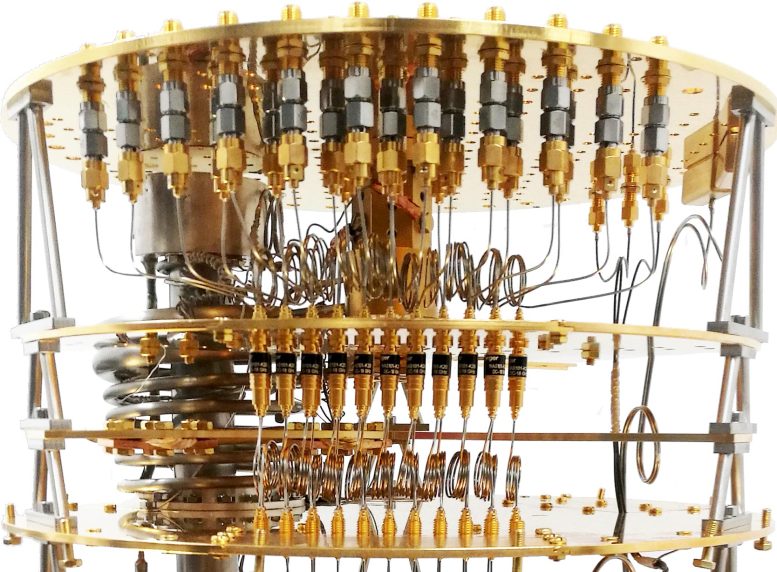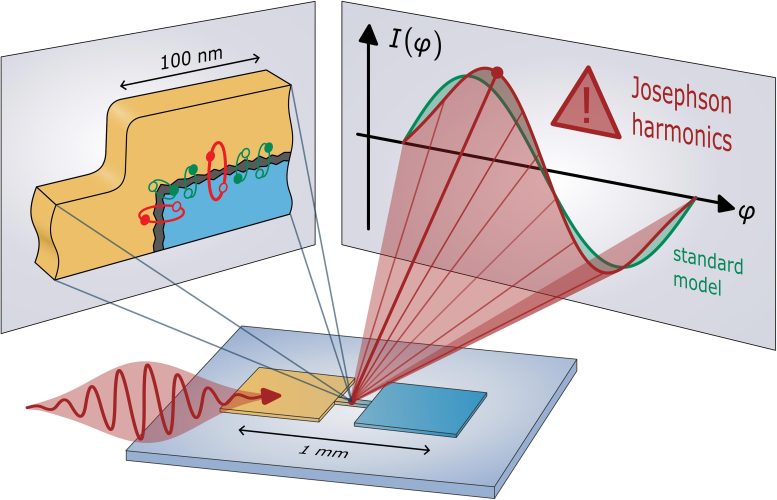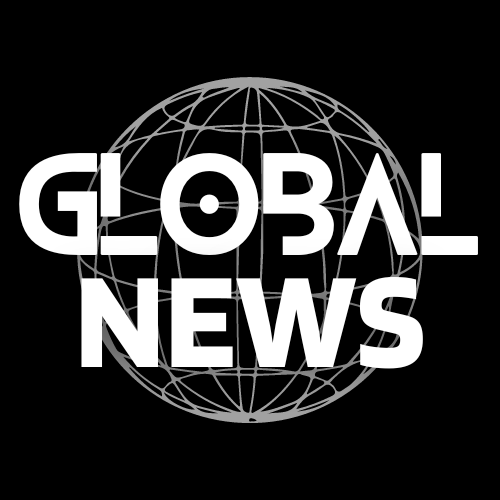[ad_1]

Cryogenic microwave setup used for quantum system measurements. Credit score: Qinu GmbH, qinu.de
Quantum bits may be described extra exactly with the assistance of newly found harmonics as a crew of 30 researchers studies in Nature Physics.
Physicists have uncovered that Josephson tunnel junctions – the elemental constructing blocks of superconducting quantum computer systems – are extra advanced than beforehand thought. Similar to overtones in a musical instrument, harmonics are superimposed on the elemental mode. As a consequence, corrections could result in quantum bits which are 2 to 7 instances extra steady. The researchers assist their findings with experimental proof from a number of laboratories throughout the globe, together with the College of Cologne, Ecole Normale Supérieure in Paris, and IBM Quantum in New York.
A Collaborative Breakthrough
It began in 2019, when Dennis Willsch and Dennis Rieger – two PhD college students from FZJ and KIT on the time and joint first authors of the paper – have been having a tough time understanding their experiments utilizing the usual mannequin for Josephson tunnel junctions. This mannequin received Brian Josephson the Nobel Prize in Physics in 1973.
Excited to resolve this, the crew led by Ioan Pop scrutinized additional information from the Ecole Normale Supérieure in Paris and a 27-qubit system at IBM Quantum in New York, in addition to information from beforehand revealed experiments. Independently, researchers from the College of Cologne noticed related deviations of their information from the usual mannequin.
“Happily, Gianluigi Catelani, who was concerned in each initiatives and realized the overlap, introduced the analysis groups collectively!” recollects Dennis Willsch from FZ Jülich. “The timing was good,” provides Chris Dickel from the College of Cologne, “since, at the moment, we have been exploring fairly completely different penalties of the identical underlying drawback.”

Backside half: By thrilling superconducting circuits (yellow/blue) with microwave indicators (pink wiggly arrow), the researchers can analyze the elemental equation that describes the Josephson tunnel junction of the circuit. Proper half: The researches have noticed important deviations (pink curve) from the sinusoidal normal mannequin (inexperienced curve). Left half: schematic zoom-in of a tunnel junction consisting of two superconductors (yellow/blue) with a skinny insulating barrier in-between. The big conduction channels (pink loops) may be chargeable for the noticed deviations from the usual mannequin. Credit score: Dennis Rieger, Patrick Winkel
Harmonics in Quantum Bits
Josephson tunnel junctions encompass two superconductors with a skinny insulating barrier in between and, for many years, these circuit parts have been described with a easy sinusoidal mannequin.
Nonetheless, because the researchers show, this “normal mannequin” fails to completely describe the Josephson junctions which are used to construct quantum bits. As an alternative, an prolonged mannequin together with increased harmonics is required to explain the tunneling present between the 2 superconductors. The precept can be discovered within the area of music. When the string of an instrument is struck, the elemental frequency is overlaid by a number of harmonic overtones.
“It’s thrilling that the measurements locally have reached the extent of accuracy at which we will resolve these small corrections to a mannequin that has been thought-about ample for greater than 15 years,” Dennis Rieger remarks.
Implications for Quantum Computing
When the 4 coordinating professors – Ioan Pop from KIT and Gianluigi Catelani, Kristel Michielsen, and David DiVincenzo from FZJ – realized the affect of the findings, they introduced collectively the massive collaboration of experimentalists, theoreticians, and materials scientists, to affix their efforts in presenting a compelling case for the Josephson harmonics mannequin. Within the Nature Physics publication, the researchers discover the origin and penalties of Josephson harmonics.
“As an instantaneous consequence, we consider that Josephson harmonics will assist in engineering higher and extra dependable quantum bits by decreasing errors as much as an order of magnitude, which brings us one step nearer in the direction of the dream of a totally common superconducting quantum pc,” the 2 first authors conclude.
Reference: “Commentary of Josephson harmonics in tunnel junctions” by Dennis Willsch, Dennis Rieger, Patrick Winkel, Madita Willsch, Christian Dickel, Jonas Krause, Yoichi Ando, Raphaël Lescanne, Zaki Leghtas, Nicholas T. Bronn, Pratiti Deb, Olivia Lanes, Zlatko Ok. Minev, Benedikt Dennig, Simon Geisert, Simon Günzler, Sören Ihssen, Patrick Paluch, Thomas Reisinger, Roudy Hanna, Jin Hee Bae, Peter Schüffelgen, Detlev Grützmacher, Luiza Buimaga-Iarinca, Cristian Morari, Wolfgang Wernsdorfer, David P. DiVincenzo, Kristel Michielsen, Gianluigi Catelani and Ioan M. Pop, 14 February 2024, Nature Physics.
DOI: 10.1038/s41567-024-02400-8
[ad_2]
Supply hyperlink

